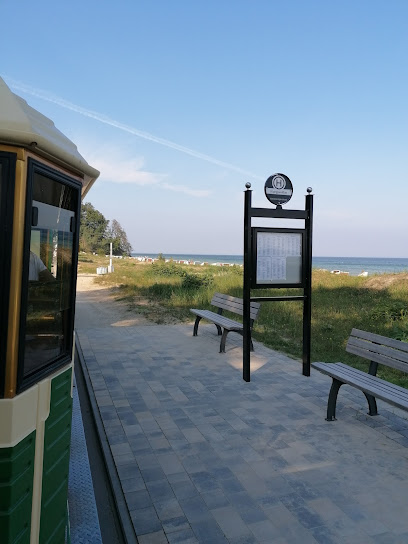
Rügen: Germany's Baltic Gem
Explore Germany's largest island: Rügen's chalk cliffs, sandy beaches, historic resorts, and natural beauty await your discovery.
Rügen, Germany's largest island, boasts a diverse landscape of chalk cliffs, sandy beaches, and charming seaside resorts. With a rich history spanning from Slavic settlements to Nazi-era developments, Rügen offers a unique blend of natural beauty and cultural heritage.
A brief summary to Rügen
- DE
Local tips
- Explore the seaside resorts of Binz and Sellin for their stunning 19th-century architecture.
- Visit Jasmund National Park to see the iconic Königsstuhl chalk cliff and ancient beech forests.
- Take a nostalgic ride on the Rasender Roland, a historic narrow-gauge steam train.
- Discover Cape Arkona's lighthouses and explore the island's Slavic history.
- Sample fresh seafood at one of the many restaurants in the coastal towns.
Getting There
-
Public Transport
From Stralsund, take a regional train to Bergen auf Rügen, the island's central hub. From Bergen, local buses connect to various towns and attractions. A single bus fare within Rügen typically costs €2-4. Consider purchasing a day ticket like the BernsteinTicket Rügen for unlimited travel on buses and trains. This ticket costs around €23 for one person.
-
Car
Rügen is connected to the mainland via the Rügen Bridge and Rügen Causeway from Stralsund. There are no tolls for crossing these bridges. Parking is available in most towns, with hourly rates ranging from €0.50 to €2.50. Daily rates near the beach can cost between €6 and €10. Parking in larger resort towns like Binz can be challenging, especially during peak season.
-
Ferry
Ferries connect Rügen to various destinations in the Baltic Sea. Ferries from Sassnitz to Bornholm cost from $50 (€40). Ferries also operate from Trelleborg and Ystad in Sweden to Sassnitz, with prices varying depending on the season and carrier. Check current schedules and fares before traveling.
Discover more about Rügen
Iconic landmarks you can’t miss
Kniepower See und Katharinensee
0.4 km
Experience the serene beauty of Kniepower See und Katharinensee, a nature preserve in Garz, perfect for tranquil walks, picnics, and wildlife observation.
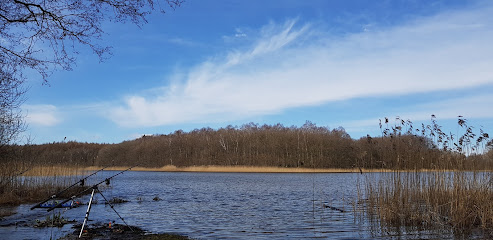
circus obelisk
7.3 km
Discover the Circus Obelisk in Putbus, a historical landmark embodying elegance and rich heritage amidst beautiful gardens.
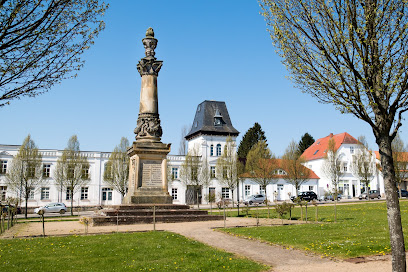
Prussia Columns
7.4 km
Explore the Prussia Columns, a historical landmark in Putbus, where architectural beauty meets rich cultural heritage.
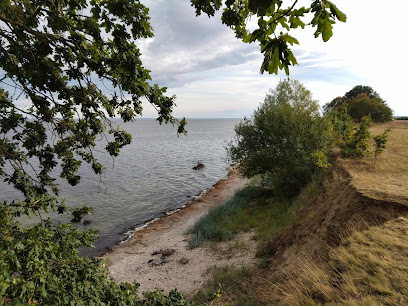
im-jaich Wasserferienwelt
9.2 km
Experience the beauty of Rügen's im-jaich Wasserferienwelt, a picturesque marina offering boating, kayaking, and serene accommodations for every traveler.
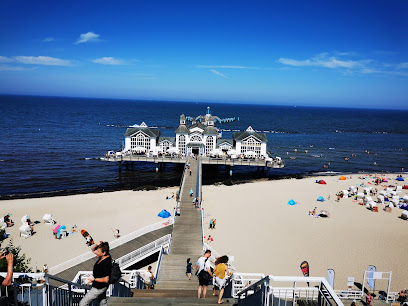
Rugard
9.4 km
Experience breathtaking views and outdoor adventures at Rugard, the majestic mountain peak in Bergen auf Rügen, Germany.
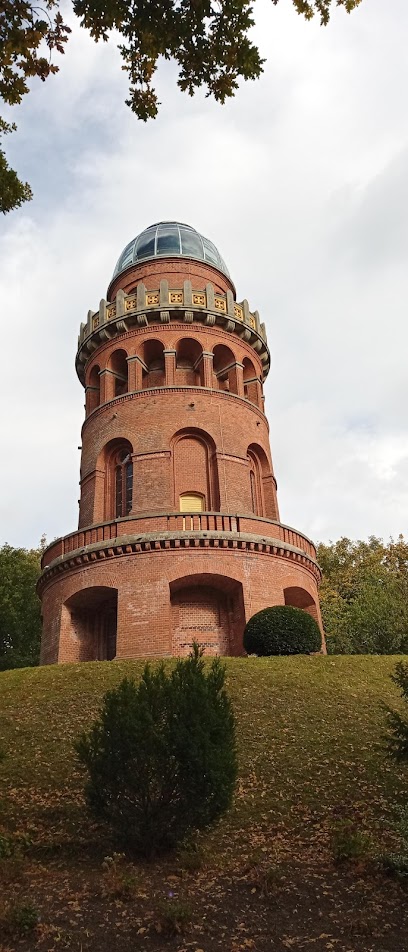
Insel Vilm
11.6 km
Explore the enchanting Insel Vilm, a wildlife refuge that offers breathtaking landscapes and a serene escape into nature's beauty.
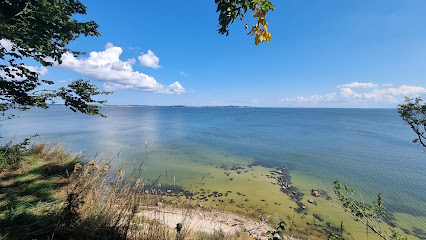
Ostrügen
11.8 km
Explore the breathtaking Ostrügen Nature Preserve, a serene escape in Bergen auf Rügen, perfect for nature lovers and outdoor enthusiasts alike.
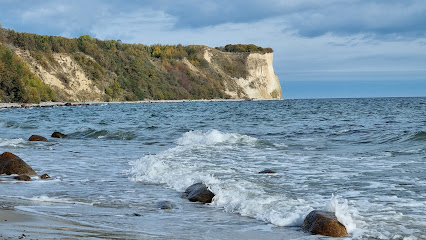
Insel Pulitz
13.0 km
Explore the serene beauty of Insel Pulitz, a nature preserve offering stunning landscapes, diverse wildlife, and peaceful escapes for all nature lovers.
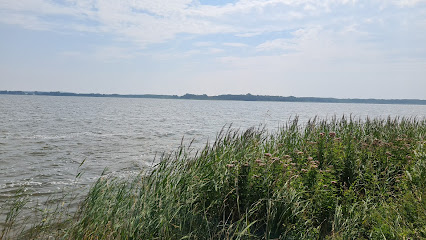
PRORA-ZENTRUM
17.0 km
Explore the historical significance of PRORA-ZENTRUM in Binz, a museum that reveals the past of the iconic Prora complex and its impact on modern history.
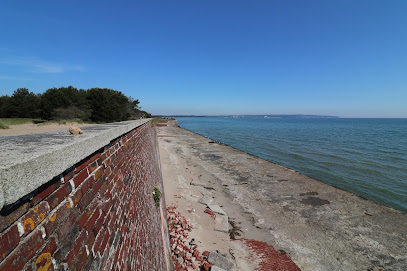
DJH Youth Hostel Prora with campsite
17.3 km
Experience history and beachfront bliss at the DJH Youth Hostel Prora, nestled within the iconic 'Colossus of Rügen' on the stunning island of Rügen, Germany.
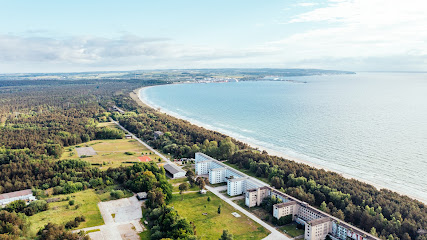
Lift Sellin Pier
22.0 km
Explore the enchanting Lift Sellin Pier, a stunning seaside destination offering breathtaking views, charming architecture, and vibrant local culture on the Baltic Sea.
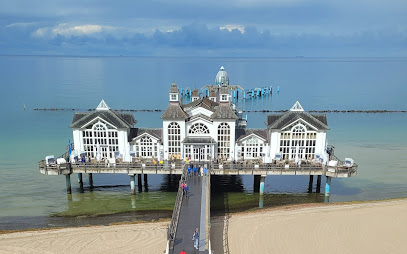
Erlebniswelt U-Boot
25.3 km
Explore the fascinating world of submarines at Erlebniswelt U-Boot, a maritime museum in Sassnitz showcasing naval history and technology.
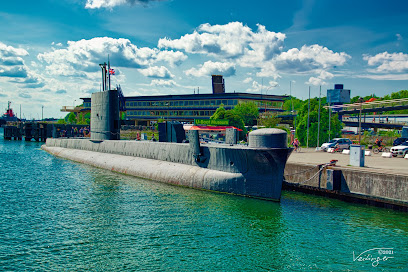
Schloss Hohendorf
25.5 km
Discover the timeless beauty and rich history of Schloss Hohendorf, a captivating castle in Groß Mohrdorf perfect for romantic getaways and cultural explorations.
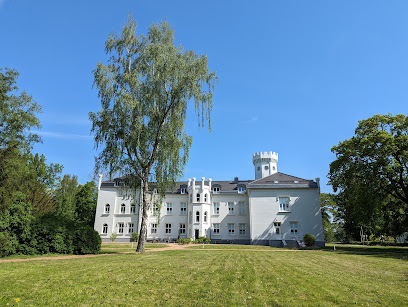
Hiddensee
27.6 km
Discover the enchanting island of Hiddensee, where breathtaking landscapes, charming villages, and a peaceful atmosphere await your exploration.

Pommersches Landesmuseum
28.6 km
Explore the Pommersches Landesmuseum in Greifswald, where history meets art, showcasing the cultural tapestry of Pomerania through engaging exhibitions.
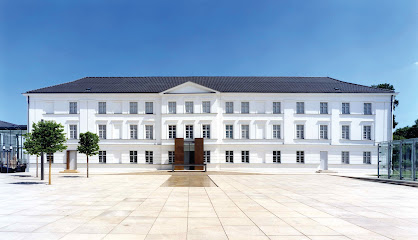
Unmissable attractions to see
Ernst-Moritz-Arndt-Museum
4.2 km
Discover the legacy of Ernst Moritz Arndt at this charming museum in Garz, Rügen, showcasing history, literature, and culture in one enriching experience.
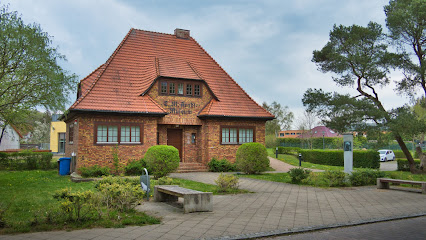
Schloss Park
7.1 km
Experience the perfect blend of nature and history at Schloss Park in Putbus, a serene and picturesque destination for every traveler.
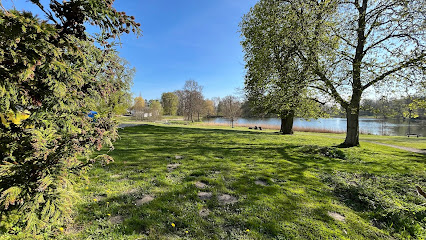
Unter den Eichen
7.3 km
Discover tranquility and natural beauty at Unter den Eichen, a serene tourist attraction in Putbus, Germany, perfect for relaxation and nature exploration.
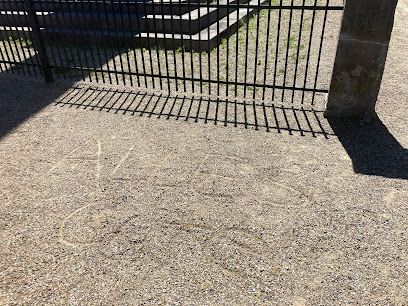
Pirate Island Rügen GmbH
8.2 km
Experience the thrill of adventure at Pirate Island Rügen – a pirate-themed amusement park and indoor playground perfect for family fun.

House capita over Putbus
8.2 km
Explore the whimsical House Capita Over Putbus, an upside-down house offering a fun, interactive experience for visitors of all ages in Rügen, Germany.
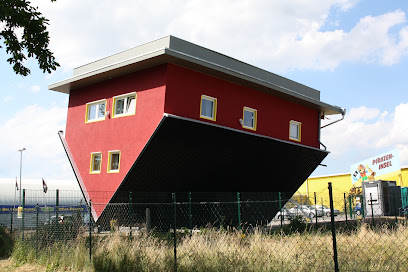
Stadtmuseum Bergen
8.5 km
Explore the captivating history of Bergen auf Rügen at the Stadtmuseum, a local history museum showcasing the region's rich cultural heritage.
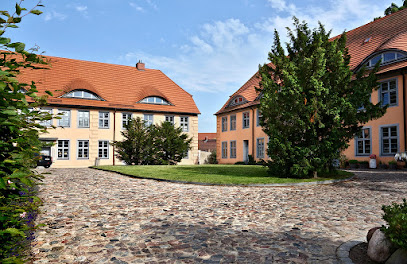
Skulptur - Rainer Kessel
8.5 km
Explore the Skulptur by Rainer Kessel in Bergen auf Rügen, where modern art meets natural beauty in a serene and inspiring setting.
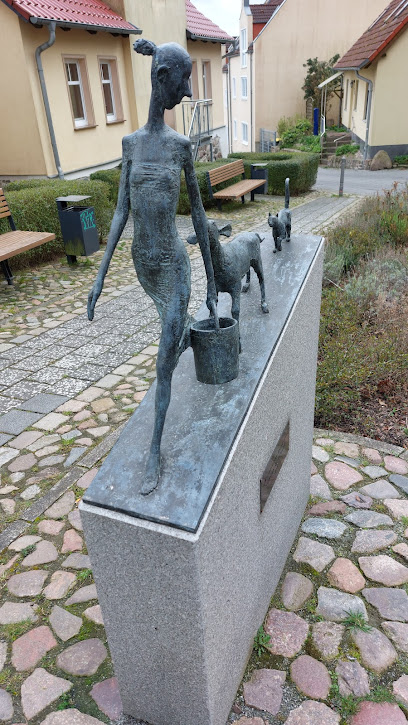
Brunnen am Markt
8.6 km
Discover the charm of Bergen auf Rügen at the Brunnen am Markt, a historic fountain surrounded by delightful shops and stunning architecture.
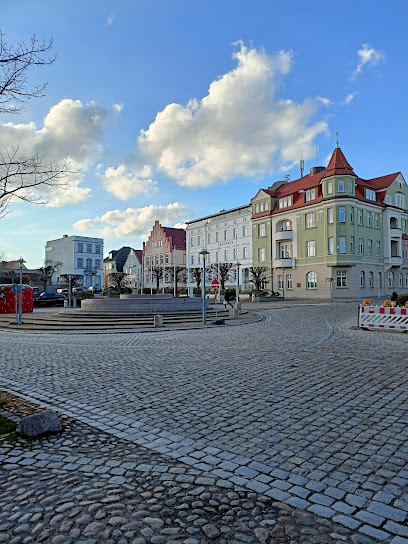
Inselrodelbahn
9.3 km
Experience the thrill of summer tobogganing at Inselrodelbahn, Bergen auf Rügen, a top family-friendly attraction with stunning views and endless fun.
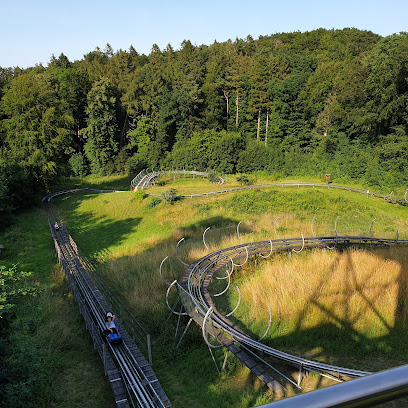
Rutschenturm Rügen
9.4 km
Explore Rutschenturm Rügen, a thrilling playground surrounded by nature, perfect for families and adventure seekers visiting beautiful Rügen Island.
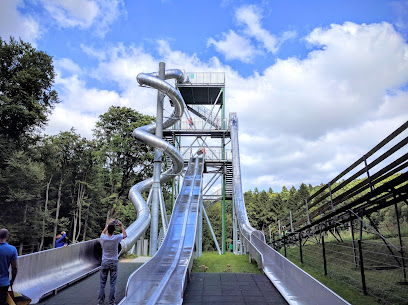
Ernst Moritz Arndt Tower
9.4 km
Explore the Ernst Moritz Arndt Tower for breathtaking views and a touch of history in Bergen auf Rügen, the heart of Germany's beautiful island.
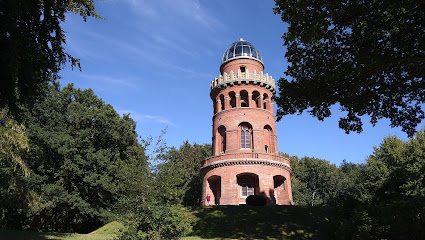
Mägdesprung Bergen auf Rügen
9.4 km
Explore Mägdesprung in Bergen auf Rügen - a serene tourist attraction rich in history and natural beauty, perfect for relaxation and adventure.

Gutshaus Losentitz
11.7 km
Discover the enchanting Gutshaus Losentitz, a historical landmark in Garz, surrounded by beautiful parks and rich cultural experiences.
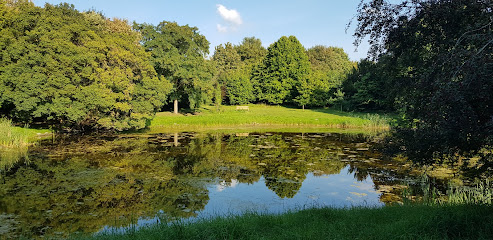
Rügenpark
13.9 km
Experience the fun and beauty of Rügenpark in Gingst, where nature meets amusement for unforgettable family adventures.

Aussichtplattform Adlerhorst - Baumwipfelpfad Rügen Naturerbezentrum Rügen
15.4 km
Discover the breathtaking Adlerhorst Observation Deck in Rügen, where nature meets adventure and stunning views await every visitor.
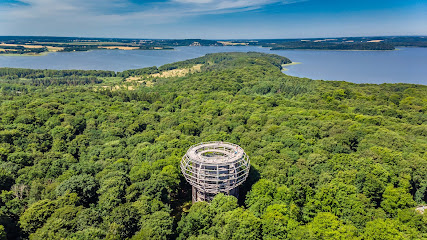
Essential places to dine
Grützmann’s Restaurant
4.6 km
Discover delicious traditional German dishes at Grützmann's Restaurant in Samtens – where every meal is a celebration of flavor.
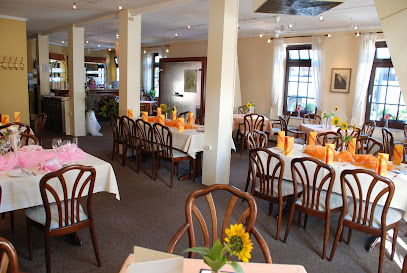
Jägerhütte Putbus
6.5 km
Discover the flavors of Germany at Jägerhütte Putbus - where tradition meets taste in a cozy setting.
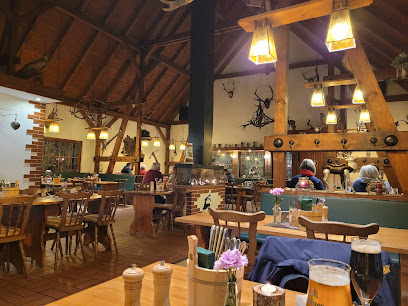
Nautilus
7.0 km
Discover Nautilus in Putbus: where exquisite dining meets charming hospitality for an unforgettable culinary journey.
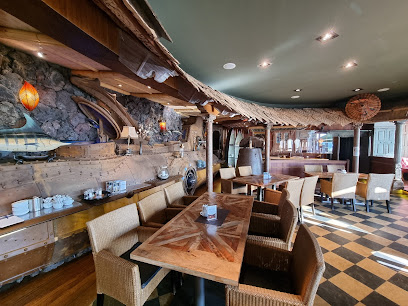
Süd-Eck Gaststätte u. Kegelbahn
7.7 km
Discover authentic German cuisine at Süd-Eck Gaststätte in Bergen auf Rügen - where flavor meets tradition in a cozy setting.

Mehmed Kantarevic Südeck
7.7 km
Experience authentic Eastern European cuisine paired with bowling fun at Mehmed Kantarevic Südeck in Bergen auf Rügen.
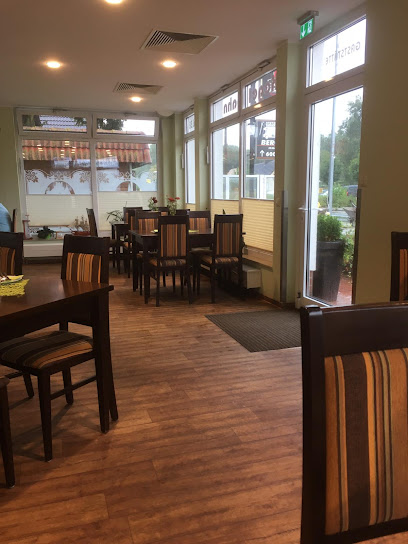
Restaurant Fienhuus
7.9 km
Experience authentic German cuisine at Restaurant Fienhuus in Bergen auf Rügen – a must-visit for food lovers exploring this beautiful island.
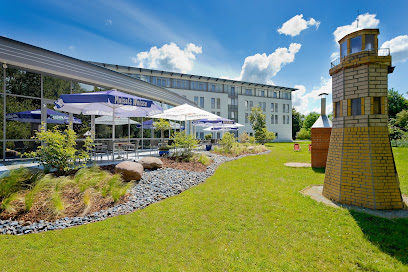
Restaurant Puk up‘n Balken
8.4 km
Experience authentic local cuisine at Restaurant Puk up‘n Balken in Bergen auf Rügen - where every dish tells a story.
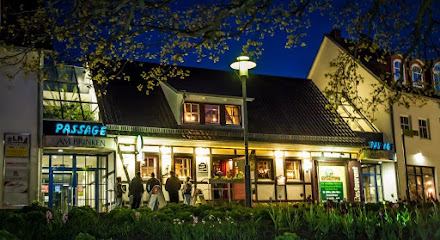
Restaurant Kontor
8.5 km
Experience the flavors of Rügen at Restaurant Kontor—where local ingredients meet exceptional culinary artistry.
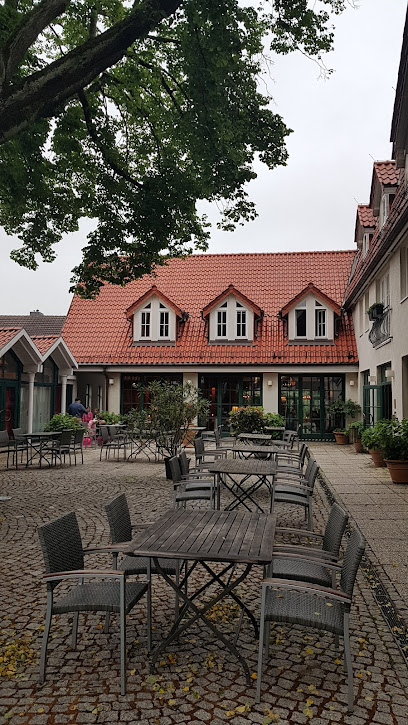
Altstadtkeller
8.5 km
Discover the rich flavors of Rügen at Altstadtkeller – where hearty meat dishes meet cozy pub vibes in Bergen auf Rügen.
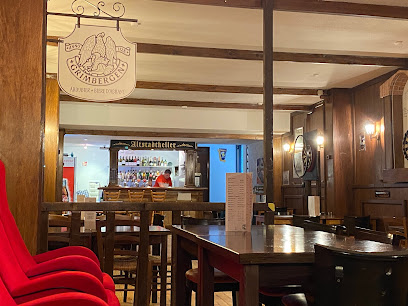
Gaststätte Stadt Bergen
8.6 km
Discover authentic German cuisine at Gaststätte Stadt Bergen - where tradition meets flavor in the heart of Bergen auf Rügen.
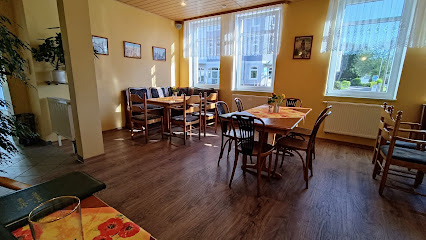
Gastwirtschaft am Markt
8.7 km
Experience authentic German cuisine in Bergen auf Rügen at Gastwirtschaft am Markt, where tradition meets taste in every dish.
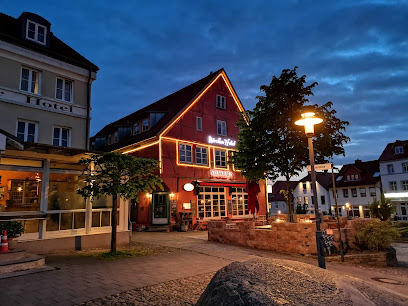
Werft-Restaurant
9.0 km
Experience exquisite seafood and authentic German flavors at Lauterbach's charming Werft-Restaurant.
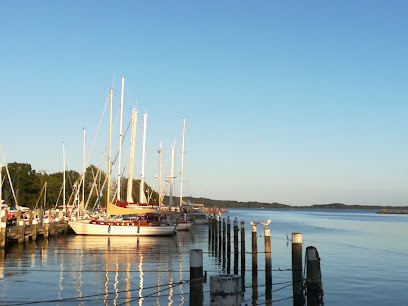
Strandhaus Altefähr
16.0 km
Discover delightful dining at Strandhaus Altefähr – where fresh seafood meets stunning seaside views in charming Altenfahr.
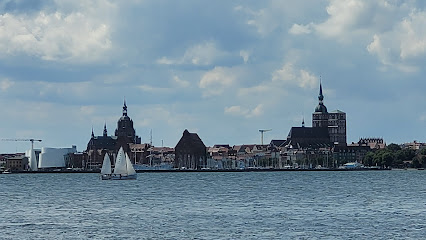
Heimathafen Prora
16.6 km
Experience exquisite hamburgers and American flavors at Heimathafen Prora while enjoying breathtaking views along the Baltic coast.

Bootshaus Binz
16.9 km
Indulge in exquisite seafood dishes with stunning views at Bootshaus Binz – where taste meets tranquility along the Baltic Sea.
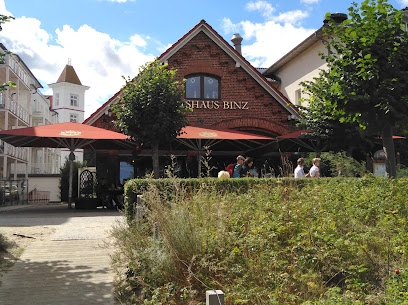
Markets, malls and hidden boutiques
jandanex
3.3 km
Explore the charm of Jandanex in Garz, Rügen—where unique shopping meets local culture and craftsmanship.
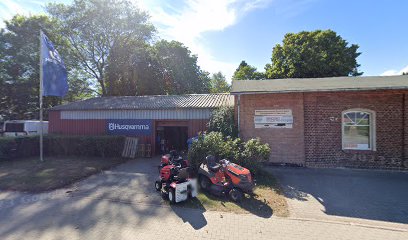
Küstengut Rügen
4.0 km
Explore a unique blend of artistry and craftsmanship at Küstengut Rügen, where every piece tells a story of local culture and creativity.
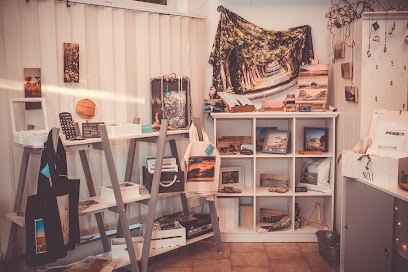
Nordwolle Showroom in Putbus
7.0 km
Explore Rügen's stunning landscapes with quality outdoor gear from Nordwolle Showroom in Putbus, where adventure begins.
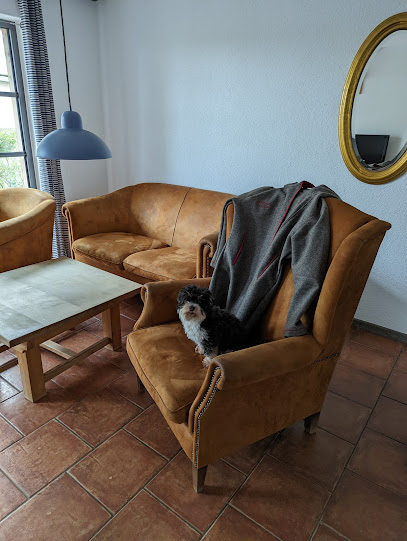
Ein Tag am Meer
7.0 km
Explore local craftsmanship and culinary delights at Ein Tag am Meer in Putbus, your go-to store for unique souvenirs and authentic Rügen treats.
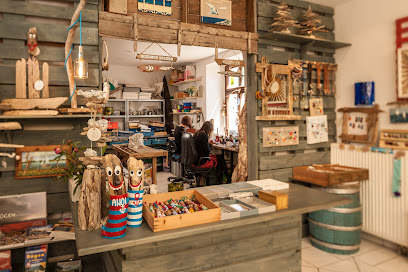
Onyx Modeladen
7.0 km
Explore contemporary fashion at Onyx Modeladen, the ultimate clothing store in Putbus, blending elegance and style for every traveler.
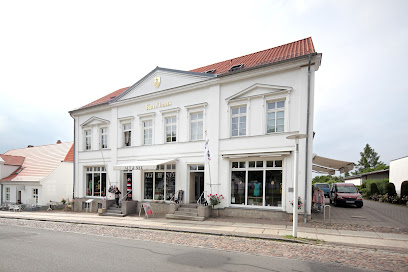
Island-Collect-Cards
7.5 km
Explore Island-Collect-Cards in Bergen auf Rügen, a haven for trading card enthusiasts with an extensive collection and expert staff.
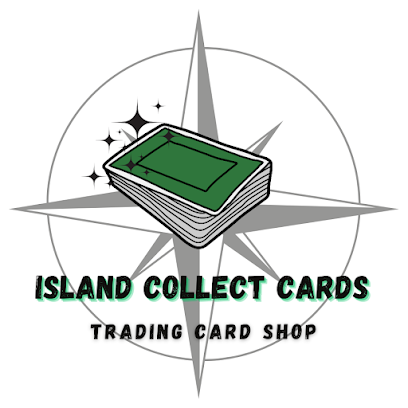
Strandgeflüster Rügen
8.4 km
Explore the charm of Rügen through unique souvenirs and handcrafted treasures at Strandgeflüster Rügen, a delightful gift shop in Bergen auf Rügen.

Insel Second Hand Boutique Rügen
8.4 km
Explore the charm of sustainable fashion at Insel Second Hand Boutique Rügen, where unique finds await eco-conscious shoppers.
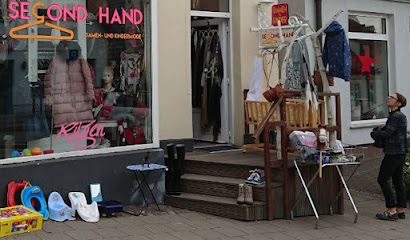
Boutique CaRna mode & mehr
8.4 km
Explore Boutique CaRna in Bergen auf Rügen for a unique blend of local fashion and style, perfect for every traveler.
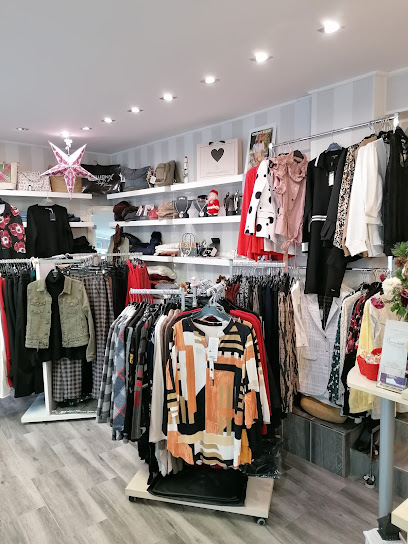
Takko
8.4 km
Explore Takko in Bergen auf Rügen for trendy clothing options for the whole family, from stylish women's wear to comfortable children's outfits.
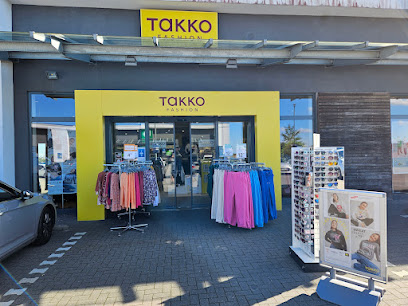
HAUTNAH bodywear
8.5 km
Explore HAUTNAH Bodywear, your ultimate destination for stylish underwear and loungewear in Bergen auf Rügen, offering quality and personalized service.
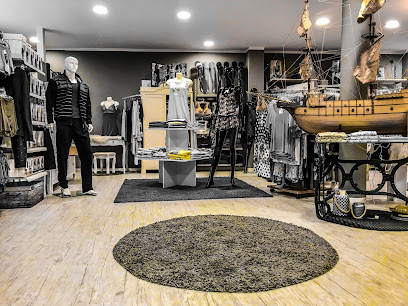
Rügen-Center
8.7 km
Explore Rügen-Center, the premier shopping mall in Bergen auf Rügen, offering diverse shops, delicious food, and a vibrant atmosphere for all visitors.
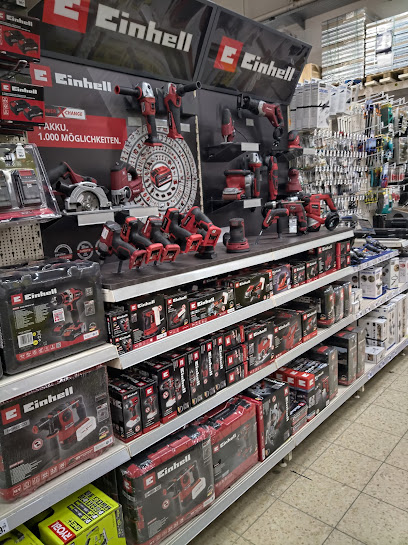
OstseeLädchen - Meer als nur ein Souvenir
16.7 km
Explore OstseeLädchen in Binz for unique souvenirs and local crafts that capture the essence of Rügen's culture and charm.
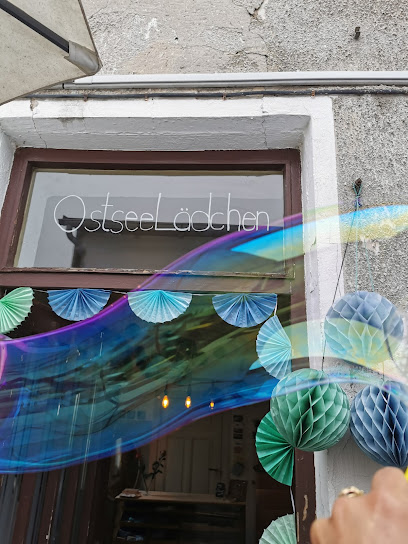
Insel Rügen Markt
17.1 km
Experience the local charm and unique offerings at Insel Rügen Markt in Binz, the perfect spot for souvenirs and local delicacies.
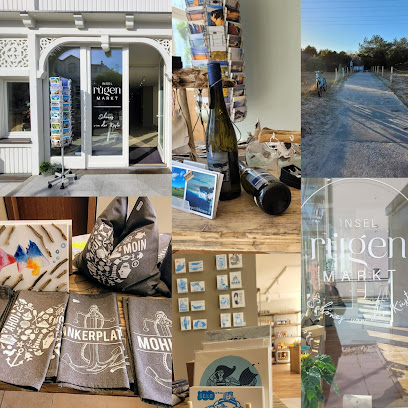
Annette Köllmann Moden Inh. A. Köllmann Kurhaus Binz
17.1 km
Explore the elegant world of Annette Köllmann Moden in Binz, where stylish clothing and personalized service create a unique shopping experience.
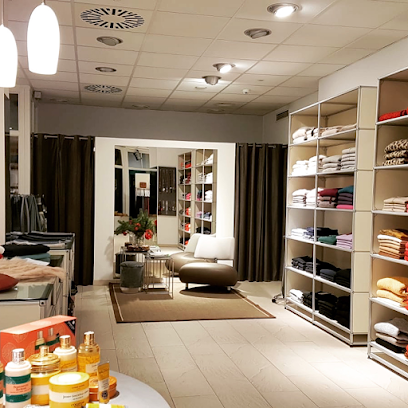
Essential bars & hidden hideouts
Bar 04 + Seefrieden Binz
16.7 km
Experience the charm of Bar 04 + Seefrieden in Binz, where delicious drinks and stunning lake views come together for an unforgettable experience.

Byntze 1318 Cocktail Bar
17.0 km
Experience the essence of luxury at Byntze 1318 Cocktail Bar in Binz, where expertly crafted cocktails and a chic ambiance await.
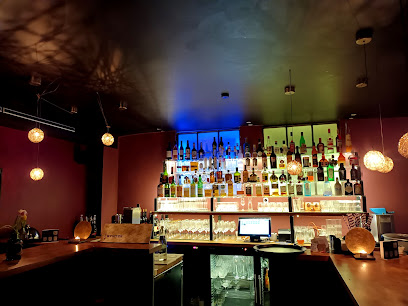
Strandbar 28
17.0 km
Experience the vibrant atmosphere and stunning views at Strandbar 28, the perfect beachside bar in Binz for relaxation and enjoyment.
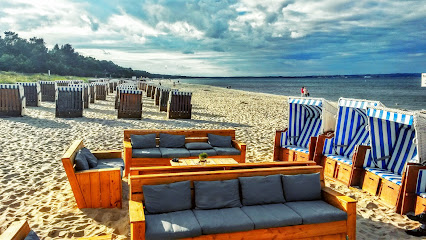
meerbar | restaurant & bar Rügen
17.1 km
Experience the best of Binz at Meerbar, where delightful cuisine meets stunning sea views for an unforgettable dining experience.
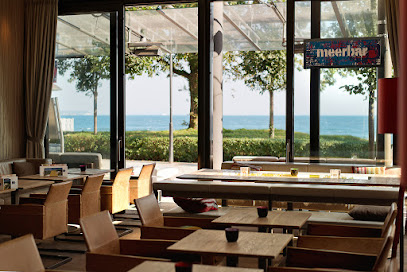
Kakadu Bar
17.1 km
Discover the vibrant atmosphere of Kakadu Bar in Binz, where refreshing drinks meet a welcoming ambiance for a perfect night out.
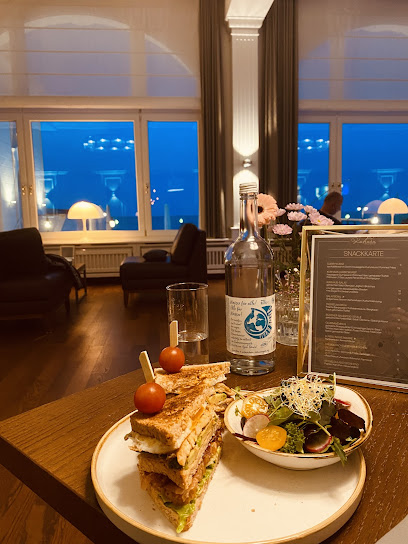
Willis Strandbar
17.2 km
Experience the vibrant beach life at Willis Strandbar, where refreshing drinks and stunning ocean views create the perfect getaway in Binz.
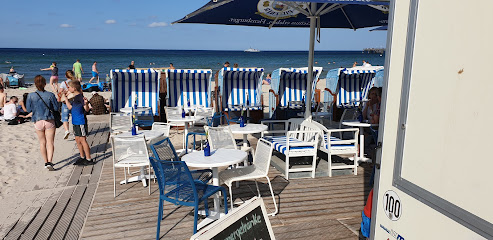
HEIMAAT Bar Lounge
17.2 km
Experience the charm of Heimaat Bar Lounge in Binz, where exceptional drinks meet breathtaking coastal views on the Strandpromenade.
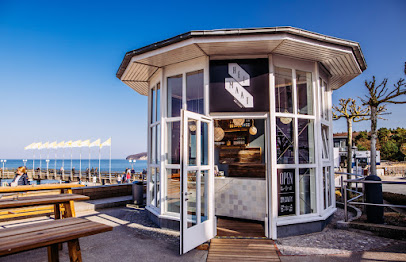
Seebrücken Lounge
17.3 km
Experience the ultimate coastal retreat at Seebrücken Lounge in Binz, where stunning sea views and vibrant nightlife await.
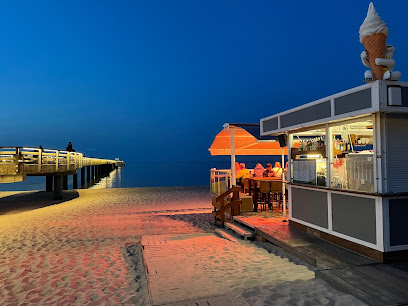
Shaker's Bar
17.4 km
Experience the vibrant atmosphere of Shaker's Bar in Binz, where stunning beach views meet delicious cocktails and great company.
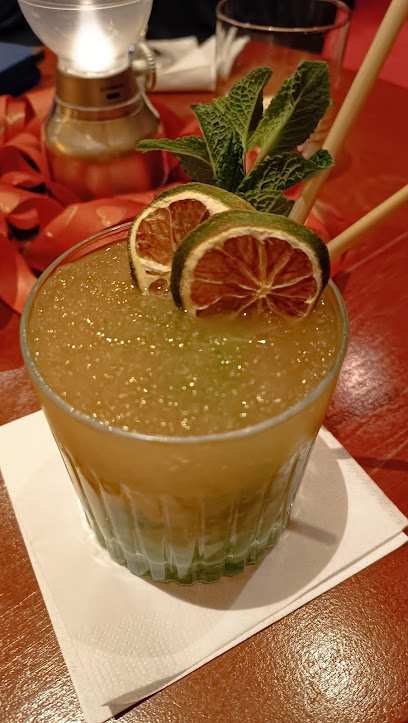
Mascha's Shisha- Cocktail- & Partylounge
18.1 km
Experience the vibrant nightlife of Stralsund at Mascha's Shisha- Cocktail- & Partylounge, where great cocktails and shisha await.
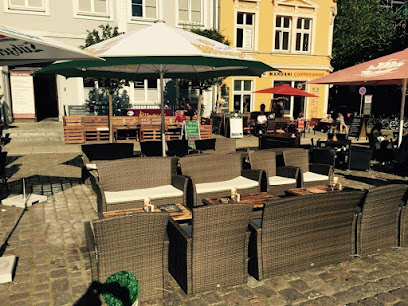
Baumhausrestaurant TIKI BAR
19.5 km
Discover the unique Baumhausrestaurant TIKI BAR in Ummanz, where delicious pizzas meet a magical treehouse dining experience.

Spiegelbar
21.7 km
Dive into the vibrant atmosphere of Spiegelbar in Sellin, where delightful drinks and captivating performances await every visitor.
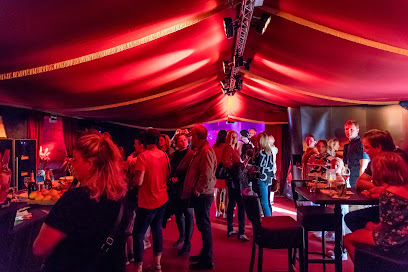
Jules Bar im Romantik ROEWERS Privathotel
21.8 km
Discover the sophisticated ambiance and exquisite drinks at Jules Bar, the perfect place to unwind in Sellin's Romantik ROEWERS Privathotel.
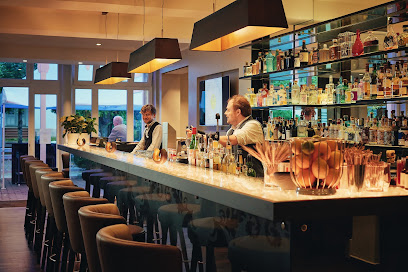
Unter Deck Bierbar
22.4 km
Unter Deck Bierbar: A vibrant bar in Baabe offering a fantastic selection of local and international beers and cocktails in a cozy atmosphere.
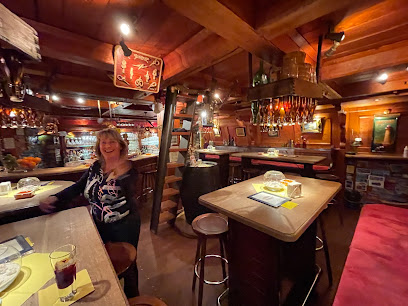
Klangpavillon
22.5 km
Discover Klangpavillon, a tranquil beach bar in Sellin offering stunning sea views, delicious drinks, and a perfect spot to unwind by the coast.
